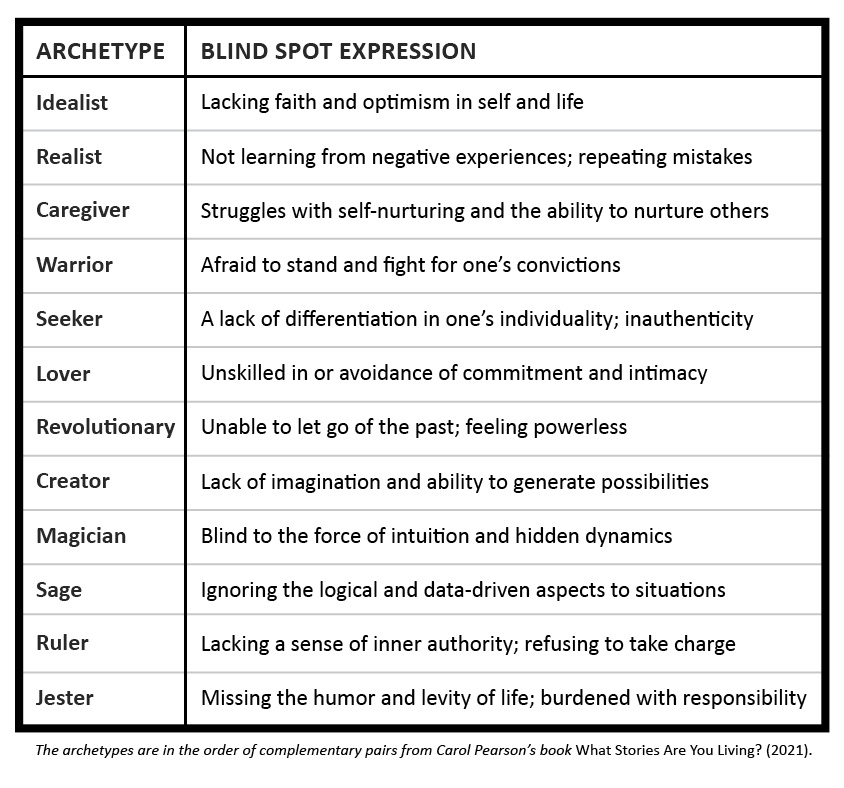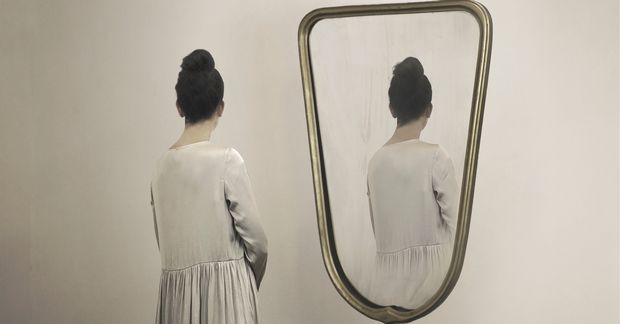Growing With Your Archetypes: Blind Spot
This is the third and final article in the Growing With Your Archetypes series. In the first two articles, we discussed high scoring Allies and mid-range Treasure Chest archetypes. In this article, we discuss the low scoring Blind Spot in the PMAI® Archetype Profile.
As mentioned in the articles on Allies and the Treasure Chest, though the PMAI reports identify the lowest scoring archetype as the Blind Spot, it is important to verify for yourself which archetypes fall into this category. For some people, the bottom two or three archetypes have bars in the Profile that are of similar length and they may also operate in similar ways in the person’s life. For others, it may truly be the lowest scoring archetype only.
The Blind Spot category is about what is playing a role in one’s life but is not noticed. Blind Spots are just that: where we are blind because we do not see the dynamic or archetypal narrative for what it is and how the lack of it in one’s conscious, active life is making an impact. It is common, and easy, to understand the lowest scoring archetypes as shadows. And this is not wrong, but there are distinctions to the Blind Spots that bring more nuance to them than only representing shadow material.
In research we conducted with the PMAI instrument and report categories, participants reported three distinct relationships to their Blind Spot archetypes.
- An old story or narrative from a different time in one’s life that no longer has energy. This was also connected with Treasure Chest archetypes in the previous article. It is more likely that this is true for sidekicks who are lower in the Profile.
- Simply not on your radar. These are archetypal characters and stories that are just not a part of your identity or worldview or life story.
- An active dislike and rejection of the qualities of this archetype.
Of these three distinctions, the last one can be considered shadow material in a Jungian psychological sense. An active rejection or dislike of an archetype indicates negative experiences and judgments of this character. It is likely that you would find a person and event or story in your past that captures your dislike of this archetypal character. It is important to verify the qualities of your Blind Spot archetypes; if you have more than one archetype in this category, you may find that there are different reasons for them being there.
What is the consequence of not knowing and working with Blind Spots? Where the Allies represent your gifts and where you find satisfaction, and the Treasure Chest represents the thrill of developing potential, Blind Spot archetypes can act as energetic snags that are holding you back, especially if you have active judgments and rejections of people and circumstances that represent this archetype for you.
Blind Spot archetypes can be identified in the inner resources you are lacking because you do not access them. Are there repetitive issues in your relationships or life areas that don’t get resolved? It may be that the attitude, perspectives, gifts, and qualities of a Blind Spot archetype could bring you valuable new insights and revelations on what is holding you back. Consciously developing the qualities of a Blind Spot archetype can be done, but its energy is not as available as that of a sidekick archetype.
Once you identify the impact of a previously unrecognized Blind Spot in your life, it is up to you to determine how to work with this narrative in your life. To work with your Blind Spot archetypes, consult the table below on the expression of each archetype as a Blind Spot and try this:
- You can intentionally develop its qualities. A helpful exercise for this is to identify people in your life who represent the positive aspects of this archetype and use them as mentors. You can also study stories and films that have this archetypal character as the central protagonist and plot. A great resource for this activity is Carol Pearson’s book What Stories Are You Living? In this book, Pearson discusses the Blind Spot category in depth and provides comprehensive archetype descriptions that include myths, stories, and films representing each of the 12 archetypes.
- You can work on healing and letting go of the old story that causes you to reject the qualities and energy that this archetype represents.
- You may decide you do not want to invest the inner resources to develop this archetype, but instead find people in your life who do and can carry this energy for you to rely on for specific needs that your Blind Spot indicates, such as self-nurturing through the Caregiver, commitment to your passion from the Lover, or the courage to stand for your convictions in the Warrior.











_thumb.png)





_thumb.png)
_thumb.png)

